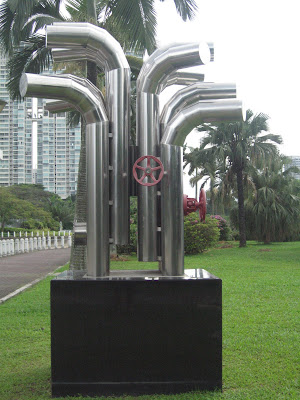eca then, cca now

(in today's straits times, my friend santokh singh wrote a piece on 'leaving school sports coaching to teachers. both of us are looking at the same topic but from our own perspective.)
the situation in schools now is so much different from the past when it comes to conducting of cca (co-curricular activities). in those days, it was referred to as eca (extra curricular activities). eca or cca, they refer to the same things. but how they are being administered and carried out have changed over the years.
when i first joined teaching, each of us was assigned an eca or two to either take charge of or to assist. as a matter of fairness, every staff member, with the exception of the principal, was allocated at least one eca. even the senior assistants - one in the morning session and one in the afternoon - were not spared. i remember one senior assistant (in my first school) was taking charge of the chess club and the other, calligraphy. those were the days before the advent of the vice-principal and the heads of department.
there were only a handful of eca where outside instructors were involved. one was the brass band where an instructor from the ecac (eca centre) was attached to the school. the other eca which sometimes had to employ instructors included the ethnic dances, swimming and the chinese orchestra. where the school had the expertise, no outside help was solicited. back then even the school choirs were handled by the school's music teachers.
most teachers learnt 'on the job' when it came to eca. a number of us were assigned eca which we had little or no knowledge of. some of us developed a passion for our assigned eca as we got to know the game/sports more and better. even those who took care of clubs and societies and the uniformed groups could become very committed to their eca. with the experience gained in the school, quite a number of teachers went on to become national coaches in their respective sports or games.
those days, some teachers themselves initiated the eca they wanted to promote. my former colleagues and i introduced the outdoor activities club and canoeing, which went on to become the most popular eca in the school. when the new nation newspaper included a school category for the race walking event, we started race walking as an eca in the school. we were not just taking charge; we were actively involved. we would train together with the students. for example, in canoeing, we went on sea expeditions with our charges.

things started to change in the 90s when schools were flushed with edusave funds. more and more outside instructors were drawn into the school scene. it first started with cca like the choir, gymnastics, rugby, calligraphy, batik painting and those that require some specialised knowledge and skill. today, practically every cca has paid helpers or outside support. the teacher's role in cca has, in most instances, been relegated to that of an attendance marker. in certain schools today, some teachers are not assigned any cca duty.

former students, former colleagues and their spouses
i am still with a group of my former students; we meet on a regular basis. some of them had been in my class but not all. one thing they have in common is that they all were members of the school's outdoor activities club. when i asked them about the greatest (school) impact on their life, the response is the same: the oac and the 10-day school camp.
school camps - for the primary 5 pupils or secondary 3 students - used to be run by the physical education department of the school or the teachers themselves. today, the running of this activity in most schools, if not all, is outsourced to outside organisations. the teachers literally take a backseat (at the campsite). i have come across groups of campers out on orienteering trips or nature walks led by young, part-time instructors without a single teacher in sight.































 scene of a gang fight - picture from national archive of s'pore
scene of a gang fight - picture from national archive of s'pore



